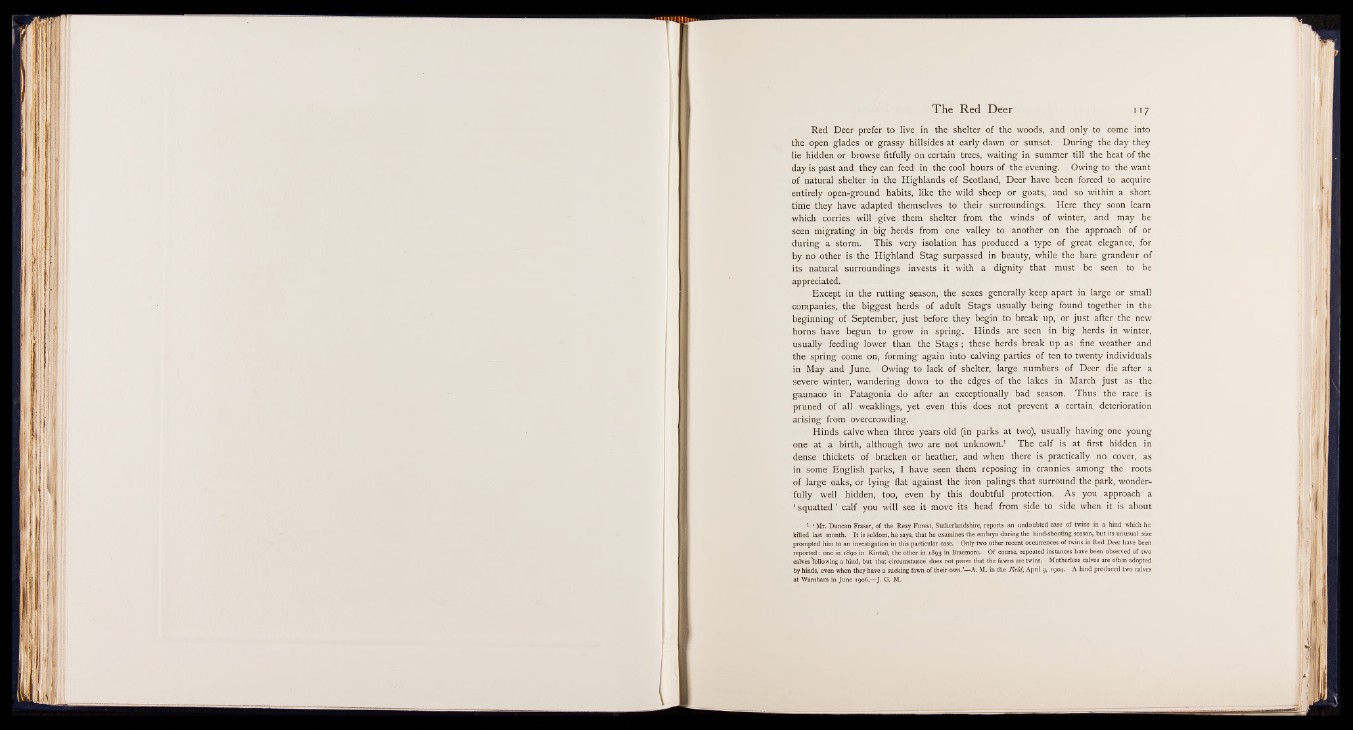
Red Deer prefer to live in the shelter of the woods, and only to come into
the open glades or grassy hillsides at early dawn or sunset. During the day they
lie hidden or browse fitfully on certain trees, waiting in summer till the heat of the
day is past and they can feed in the cool hours of the evening. Owing to the want
of natural shelter in the Highlands of Scotland, Deer have been forced to acquire
entirely open-ground habits, like the wild sheep or goats, and so within a short
tinie they have adapted themselves to their surroundings. Here they soon learn
which corries will give them shelter from the winds of winter, and may be
seen migrating in big herds from one valley to another on the approach of or
during a storm. This very isolation has produced a type of great elegance, for
by no other is the Highland Stag surpassed in beauty, while the bare grandeur of
its natural surroundings invests it with a dignity that must be seen to be
appreciated.
Except in the rutting season, the sexes generally keep apart in large or small
companies, the biggest herds of adult Stags usually being found together in the
beginning of September, just before they begin to break up, or just after the new
horns have begun to grow in spring. Hinds are seen in big herds in winter,
usually feeding lower than the Stags ; these herds break up as fine weather and
the spring come on, forming again into calving parties of ten to twenty individuals
in May and June. Owing to lack of shelter, large numbers of Deer die after a
severe winter, wandering down to the edges of the lakes in March just as the
gaunaco in Patagonia do after an exceptionally bad season. Thus the race is
pruned of all weaklings, yet even this does not prevent a certain deterioration
arising from overcrowding.
Hinds calve when three years old (in parks at two), usually having one young
one at a birth, although two are not unknown.1 The calf is at first hidden in
dense thickets of bracken or heather, and when there is practically no cover, as
in some English parks, I have seen them reposing in crannies among the roots
of large oaks, or lying flat against the iron palings that surround the park, wonderfully
well hidden, too, even by this doubtful protection. As you approach a
‘ squatted ’ calf you will see it move its head from side to side when it is about
1 ‘ Mr. Duncan Fraser, of the Reay Forest, Sutherlandshire, reports an undoubted case of twins in a hind which he
killed last month. It is seldom, he says, that he examines the embryo during the hind-shooting season, but its unusual size
prompted him to an investigation in this particular case. Only two other recent occurrences of twins in Red Deer have been
reported : one in 1890 in Kintail, the other in 1893 in Braemore. Of course, repeated instances have been observed of two
calves 'following a hind, but that circumstance does not prove that the fawns are twins. Motherless calves are often adopted
by hinds, even when they have a sucking fawn of their own.’—A. M. in the Field, April 9, 1904. A hind produced two calves
at Warnham in June 1906.— J. G. M.